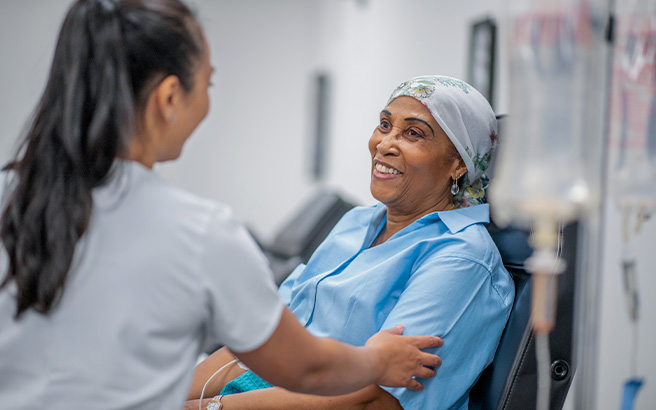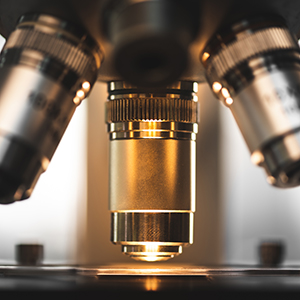At the end of 2019, a novel coronavirus (Sars-CoV-2) was discovered in Wuhan, China. Since then, the infection caused by the virus (COVID-19) has touched every country and community across the globe.
The urgent and ongoing need to treat those with COVID-19, and control the virus within the community, has meant that healthcare resources continue to be diverted away from other diseases and conditions, including cancer.
In this blog post, we look at the global evidence and explore the ways in which cancer screening, treatment and clinical trials have changed during the COVID-19 pandemic.
Delays and reductions in cancer services
Screening is a key element of improving cancer outcomes – the earlier someone is diagnosed with cancer, the more likely they are to survive. Unfortunately, COVID-19 has meant that appointments for cancer screening, as well as diagnosis (including radiology imaging and lab testing of potential cancers), had to be either suspended or reduced. Globally, there is a backlog within cancer screening that will need to be addressed before services can resume as normal.
At the same time, individuals eligible for cancer screening may have been reluctant to attend their appointment due to fears of being exposed to COVID-19 at the hospital, clinic or GP surgery.
In many countries, governments made the decision to place their populations into lockdown. During this period, research suggests that there was a substantial reduction in the number of people attending urgent referrals and chemotherapy appointments. At the same time, some cancer services became available only online or by telephone.
Clinical trials disrupted
 As with prevention and treatment, clinical trials for cancer have been either delayed or stopped entirely. The impact on the health of the individuals involved in a trial, or the development of cancer treatments in the future, is yet to be fully understood.
As with prevention and treatment, clinical trials for cancer have been either delayed or stopped entirely. The impact on the health of the individuals involved in a trial, or the development of cancer treatments in the future, is yet to be fully understood.
Much of the evidence in this blog post comes from high-income countries (HIC), but COVID-19 has also had a significant impact on cancer services in low- and middle-income countries, and places with fewer resources to cope with cancer. As with HICs, screening services have been delayed or stopped and this may have an even greater impact on an individual’s health when there are limited treatment options in their location.
Health inequalities
Further to this, COVID-19 has exacerbated the already-present health inequalities in cancer screening, treatment and outcomes in all countries regardless of income status. Those who often face barriers to living healthily, and accessing health information and services (including cancer prevention, diagnosis and treatment), are likely to find these barriers have increased during the pandemic. This, in turn, increases inequalities in cancer outcomes such as life expectancy after a diagnosis, and mortality.
As the pandemic progresses, and populations begin to move out of lockdown, there may be a need for a new normal in which individuals can safely attend their cancer appointments.
COVID-19 has meant that healthcare services have been redirected away from other diseases and conditions. The reductions in cancer screening and treatment during the pandemic mean that, while incidence of cancer is likely the same, fewer cases are being diagnosed in a timely manner. And this means that cancer mortality may increase in the future because people are being diagnosed, and starting treatment, at a later stage of the disease.
The full impact is yet to be completely understood and, as the global population begins to live with COVID-19 in the long term, research is needed to fully understand how it has affected cancer services and outcomes.


